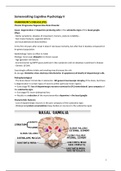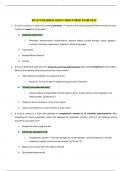Samenvatting
Samenvatting Cognitive Psychology Guest Lectures
Samenvatting van de gastcollege's cognitieve psychologie 2 met veel afbeeldingen. Het vak is in het Engels dus de samenvatting ook. Parkinson's disease, eating disorders, social cognition and ASD, sleep disorders and cognition, mindfulness and cognition, unnilateral neglect
[Meer zien]






